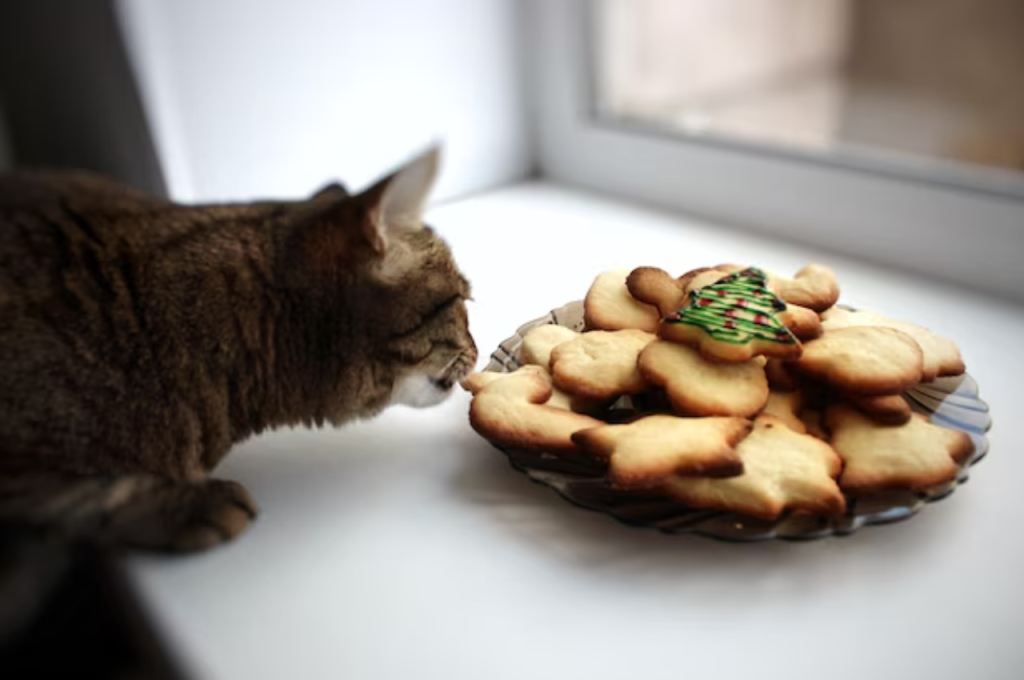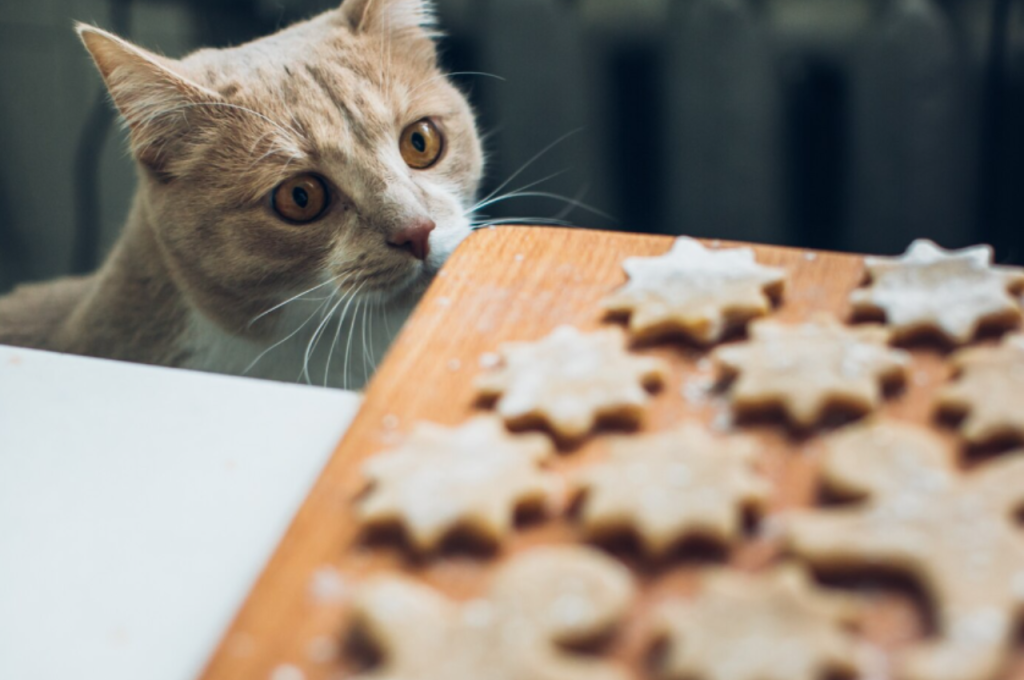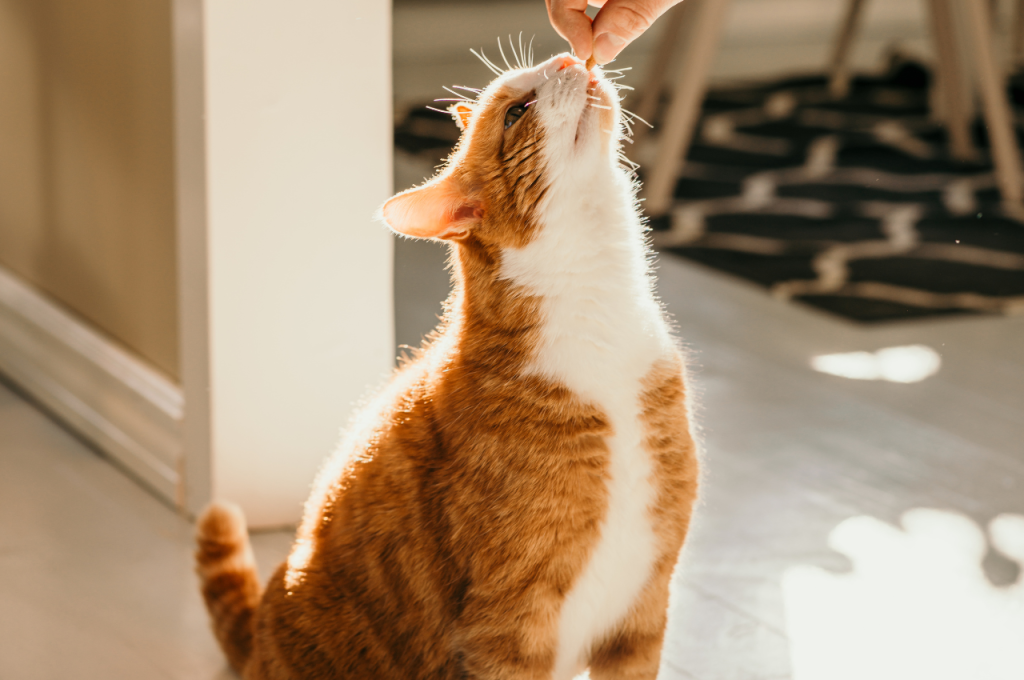Yes, cats can eat biscuits in moderation, but they should not make up a significant part of their diet. Biscuits that are specially formulated for cats are safer as they meet their dietary needs.
Cats may enjoy an occasional biscuit treat, but their main diet should consist of high-quality cat food. It is important to consult with a veterinarian before introducing new foods to your cat’s diet to ensure their health and well-being. Offering a variety of treats and snacks can help keep your feline friend happy and satisfied while ensuring they receive all their required nutrients.
Remember to always prioritize your cat’s nutritional needs for their optimal health.
1. Cat Nutrition Basics
Cats require specific nutrients to thrive and maintain optimal health. Understanding the essential elements of a cat’s diet is crucial to providing proper care for your feline friend.

1.1 Essential Nutrients for Cats
Cats need a balanced mix of protein, fat, carbohydrates, vitamins, and minerals to support their overall well-being.
1.2 Importance of A Balanced Diet
A balanced diet ensures that your cat receives the necessary nutrients in the right amounts to support growth, energy levels, and immune function.
2. Understanding Biscuits
Cats are curious creatures and may show interest in various human foods, including biscuits. While it is important to understand what constitutes a safe and healthy diet for your feline friend, it is equally crucial to delve into the specifics of biscuits before considering sharing them with your cat.
2.1 Types of Biscuits
Biscuits come in a variety of shapes, sizes, and flavors. From savory crackers to sweet cookies, these baked treats are a common snack enjoyed by humans worldwide. When it comes to cats, it is essential to choose biscuits that are plain and simple without any added flavors or seasonings.
2.2 Ingredients in Biscuits
Just like with any other food, it is crucial to be aware of the ingredients present in biscuits before offering them to your cat. Some common ingredients found in biscuits include flour, sugar, salt, butter, and sometimes additives or preservatives. Before sharing biscuits with your cat, ensure they do not contain any harmful substances like chocolate, raisins, or xylitol.
3. Can Cats Eat Biscuits?
Wondering if it’s safe for cats to munch on biscuits? While cats can nibble on plain, unsalted biscuits occasionally, it’s essential to avoid flavored or sweetened varieties. Moderation is key to preventing any digestive upsets in our feline friends.
3.1 Potential Health Risks
When it comes to feeding biscuits to your feline friend, it’s important to be aware of the potential health risks. While cats can safely consume certain types of biscuits as an occasional treat, there are some important factors to consider. One potential risk is the high carbohydrate content found in many biscuits. Cats are obligate carnivores and have specific dietary needs that are best met through a balanced and protein-rich diet. Excessive carbohydrate intake can lead to weight gain, digestion issues, and even diabetes in cats. Additionally, some biscuits may contain ingredients that are harmful or toxic to cats.
For example, certain spices, such as garlic and onion, can be toxic to felines and should be avoided. Other potential harmful additives include artificial flavors, preservatives, and excessive salt content. It’s crucial to read the ingredient list carefully before offering biscuits to your cat to ensure they are safe to consume.
3.2 Moderation and Portion Control
To ensure your cat’s health and well-being, it is recommended to practice moderation and portion control when it comes to feeding biscuits. While a small amount of biscuits occasionally may not pose severe health risks, it’s important to remember that they should never replace a balanced and nutritious diet specifically formulated for cats. When offering biscuits to your cat, it’s advisable to break them into small pieces or crush them to reduce the risk of choking. This can also help with portion control, as cats should only consume a small amount of their overall diet.
In addition, incorporating biscuits into interactive feeding toys or using them as rewards during training sessions can help stimulate your cat mentally and provide enrichment.
4. Alternatives to Biscuits
Cats love treats, but biscuits may not always be the best option for our furry friends. Fortunately, there are several alternatives to biscuits that you can give your cat as a special treat. Let’s explore some healthy and homemade options for your feline companion!

4.1 Healthy Treat Options
When choosing healthy treats for your cat, it’s important to consider options that are not only safe for them to eat but also provide nutritional benefits. Some healthy treatment options to consider include:
- Freeze-dried meat or fish
- Fruits such as blueberries or apples (in small quantities)
- Small amounts of cooked vegetables like carrots or green beans
- Grain-free, natural cat treats with limited ingredients
4.2 Homemade Cat Treat Recipes
If you’re interested in creating homemade treats for your cat, there are plenty of simple recipes you can try. Homemade cat treats can be a fun way to ensure your cat is getting a healthy snack. Here are a few recipe ideas to get you started:
- Tuna Cat Treats: Mix canned tuna with a small amount of flour and water, then bake until it has a flaky texture.
- Chicken and Catnip Treats: Mix cooked chicken, catnip, and a bit of oat flour, then form into small balls and bake until golden brown.
- Salmon and Sweet Potato Treats: Combine cooked salmon, mashed sweet potato, and coconut flour into a dough, then cut into small shapes and bake until crispy.
5. Signs of Biscuit Allergy
Signs of a biscuit allergy in cats can vary depending on the severity of the allergic reaction and the individual cat’s sensitivity. Here are some common signs to watch for:
5.1 Common Symptoms
Common symptoms of biscuit allergy in cats include:
- Rashes or hives
- Itching or scratching excessively
- Swelling of the face, throat, or ears
- Vomiting or diarrhea
5.2 Steps to Take
If you notice any of these symptoms after your cat has eaten biscuits, take the following steps:
- Consult with your veterinarian immediately
- Keep a record of the symptoms and when they occurred
- Avoid feeding your cat any more biscuits
6. Proper Feline Diet
Providing your cat with a proper diet is essential for their overall health and well-being. Cats have specific dietary requirements that need to be met to maintain optimal nutrition and prevent any health issues. When it comes to feeding your feline friend, it’s important to consider their unique needs and make informed choices. In this section, we will explore some key aspects of a proper feline diet.
6.1 High-quality Cat Food
One of the most important components of a proper feline diet is high-quality cat food. Cats are obligate carnivores, which means they rely on meat as their primary source of nutrition. Therefore, it is crucial to choose cat food that is specifically formulated to meet their dietary needs.
When selecting cat food, look for options that are labeled as “complete and balanced” to ensure that your cat is getting all the essential nutrients they need. These foods are specifically formulated to provide a balanced blend of proteins, fats, vitamins, and minerals that support your cat’s overall health.
Be sure to check the ingredient list on the cat food packaging. Look for high-quality sources of protein, such as chicken or fish, as the main ingredient. Avoid cat foods that contain excessive fillers, artificial preservatives, or by-products.
6.2 Suitable Supplements
In addition to high-quality cat food, certain supplements can also be beneficial for your cat’s overall health. However, it is important to consult with your veterinarian before introducing any supplements into your cat’s diet to ensure they are suitable and safe for them.
Some common supplements that cat owners may consider include:
- Omega-3 fatty acids: These can support your cat’s joint health and contribute to a healthy coat.
- Probiotics: These can promote healthy gut flora and aid in digestion.
- Taurine: An essential amino acid for cats that helps maintain their heart health and vision.
Remember, supplements should never replace a balanced diet, and should only be used as directed by your veterinarian.
By prioritizing high-quality cat food and considering suitable supplements, you can ensure that your cat’s diet meets their nutritional requirements for a healthy and happy life.
7. Consulting A Veterinarian
Cats have diverse nutritional requirements. Always prioritize the health of your furry friend. Assess your cat’s specific needs, considering age, weight, and any medical conditions. Consult your veterinarian for personalized advice on feeding your cat biscuits. Veterinarians can recommend suitable biscuit options based on your cat’s requirements.

Remember, your veterinarian’s guidelines tailored to your cat are the most important.
Frequently Asked Questions of Can Cats Eat Biscuits?
Certainly! Here are some frequently asked questions (FAQs) about signs of biscuit allergy in cats:
Can cats eat biscuits as a treat?
Yes, cats can eat biscuits in moderation. However, it’s important to ensure the biscuits are plain and not seasoned or contain harmful ingredients like chocolate or xylitol. Monitor for any adverse reactions and consult with your veterinarian before introducing new foods into your cat’s diet.
Are there any health benefits for cats consuming biscuits?
In moderation, some biscuits can provide added nutrients and variety to a cat’s diet. However, it’s crucial to prioritize a well-balanced cat food diet to meet their specific nutritional needs. Consult with a veterinarian to determine if and how biscuits can fit into your cat’s overall dietary plan.
What types of biscuits can be harmful to cats?
Certain types of biscuits can be harmful to cats, especially those containing chocolate or xylitol. These ingredients are toxic to cats and should be avoided at all costs. Always check the label and ingredients list to ensure the biscuits are safe for your feline friend.
How should I introduce biscuits into my cat’s diet?
When introducing biscuits to your cat’s diet, start by offering a small amount as a treat and observe for any adverse reactions. Gradually increase the portion size if your cat tolerates them well. Be mindful of the overall calorie intake to prevent excessive weight gain.
Always consult with your veterinarian for personalized advice.
Conclusion
To summarize, it is important to consider the ingredients and nutritional value of biscuits before offering them to your feline friend. While some types of biscuits may be safe for cats to consume in moderation, others may pose health risks.
It’s always best to consult with your veterinarian before introducing any new types of food into your cat’s diet. Remember, their well-being should always be a top priority.
